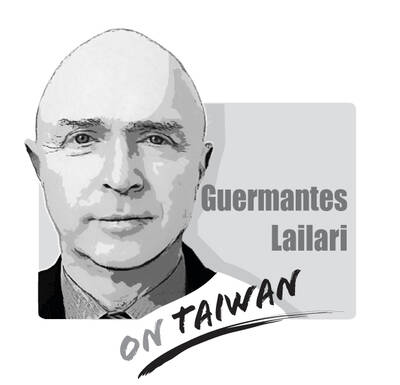The government’s updated plan to boost private consumption by issuing stimulus coupons should provide much-needed support to the economy, given that the plan has multiple payment tools, and is larger in scale and has better rewards than the original version. That might dissipate some economists’ concerns that Taiwan might not record positive GDP growth this year, and fail to outperform major Asian economies such as Singapore and South Korea.
In the first quarter of this year, Taiwan outperformed most economies, with annual GDP growth of 1.54 percent, but the question now is how to keep the engine running. Domestic demand contributed 0.68 percentage points, or 44 percent, to last quarter’s GDP, and spurring domestic consumption has become one of the government’s top priorities. The nation’s manufacturing sector has been hurt by the COVID-19 pandemic, as people in Taiwan’s major export markets, such as China, the US and Europe, have delayed purchasing non-essential items amid a global economic downturn.
Large-scale containment measures and lockdowns worldwide have also constrained factory production and commercial activities, hurting demand for electronics, components and petrochemical products made in Taiwan. As a result, the production value of the nation’s manufacturing sector is expected to shrink 5.7 percent annually, the Industrial Technology Research Institute (工研院) said in its latest forecast.
While external demand is beyond the government’s control, domestic consumption and investment can be spurred via fiscal policies. The government is close to finalizing details of stimulus coupons worth NT$40 billion (US$1.33 billion), which is almost four times the original budget of NT$11.1 billion.
As the subsidy aims to boost consumption, the program should be expanded to cover all Republic of China citizens, National Development Council Minister Kung Ming-hsin (龔明鑫) said yesterday during an interview with Hit FM radio host Clara Chou (周玉蔻).
The plan would allow anyone, regardless of age or income, to pay NT$1,000 to obtain vouchers worth NT$3,000, which is a U-turn from the original plan of excluding high-income earners from the scheme.
To maximize the vouchers’ effectiveness, the government is to expand their use to pay for almost everything from snacks at night markets or coffee at convenience stores to travel and entertainment. However, they cannot be used to “hoard” everyday necessities, such as toilet paper, or make purchases online.
People would also be able to make payments not only through digital payment platforms as previously planned, but also by other means.
The government is considering allowing payments via credit cards, Kung said.
In 2008, the government launched a similar, yet less sophisticated scheme by issuing NT$86.5 billion of consumption coupons, or NT$3,600 for each recipient, to combat the fallout from the global financial crisis. That helped boost the nation’s GDP by 0.28 to 0.43 percent the next year, lower than the estimated 0.66 to 1 percent, as most people spent the money on daily necessities, rather than on extra items.
Although the budget for the new plan is less than half the amount of 2008, it might at least offer a lifeline to local retailers, restaurants, hotels and tourism businesses that are on the verge of collapse.
A response to my article (“Invite ‘will-bes,’ not has-beens,” Aug. 12, page 8) mischaracterizes my arguments, as well as a speech by former British prime minister Boris Johnson at the Ketagalan Forum in Taipei early last month. Tseng Yueh-ying (曾月英) in the response (“A misreading of Johnson’s speech,” Aug. 24, page 8) does not dispute that Johnson referred repeatedly to Taiwan as “a segment of the Chinese population,” but asserts that the phrase challenged Beijing by questioning whether parts of “the Chinese population” could be “differently Chinese.” This is essentially a confirmation of Beijing’s “one country, two systems” formulation, which says that

“History does not repeat itself, but it rhymes” (attributed to Mark Twain). The USSR was the international bully during the Cold War as it sought to make the world safe for Soviet-style Communism. China is now the global bully as it applies economic power and invests in Mao’s (毛澤東) magic weapons (the People’s Liberation Army [PLA], the United Front Work Department, and the Chinese Communist Party [CCP]) to achieve world domination. Freedom-loving countries must respond to the People’s Republic of China (PRC), especially in the Indo-Pacific (IP), as resolutely as they did against the USSR. In 1954, the US and its allies
Indian Prime Minister Narendra Modi arrived in China yesterday, where he is to attend a summit of the Shanghai Cooperation Organization (SCO) with Chinese President Xi Jinping (習近平) and Russian President Vladimir Putin today. As this coincides with the 50 percent US tariff levied on Indian products, some Western news media have suggested that Modi is moving away from the US, and into the arms of China and Russia. Taiwan-Asia Exchange Foundation fellow Sana Hashmi in a Taipei Times article published yesterday titled “Myths around Modi’s China visit” said that those analyses have misrepresented India’s strategic calculations, and attempted to view
When Chinese President Xi Jinping (習近平) stood in front of the Potala Palace in Lhasa on Thursday last week, flanked by Chinese flags, synchronized schoolchildren and armed Chinese People’s Liberation Army (PLA) troops, he was not just celebrating the 60th anniversary of the establishment of the “Tibet Autonomous Region,” he was making a calculated declaration: Tibet is China. It always has been. Case closed. Except it has not. The case remains wide open — not just in the hearts of Tibetans, but in history records. For decades, Beijing has insisted that Tibet has “always been part of China.” It is a phrase